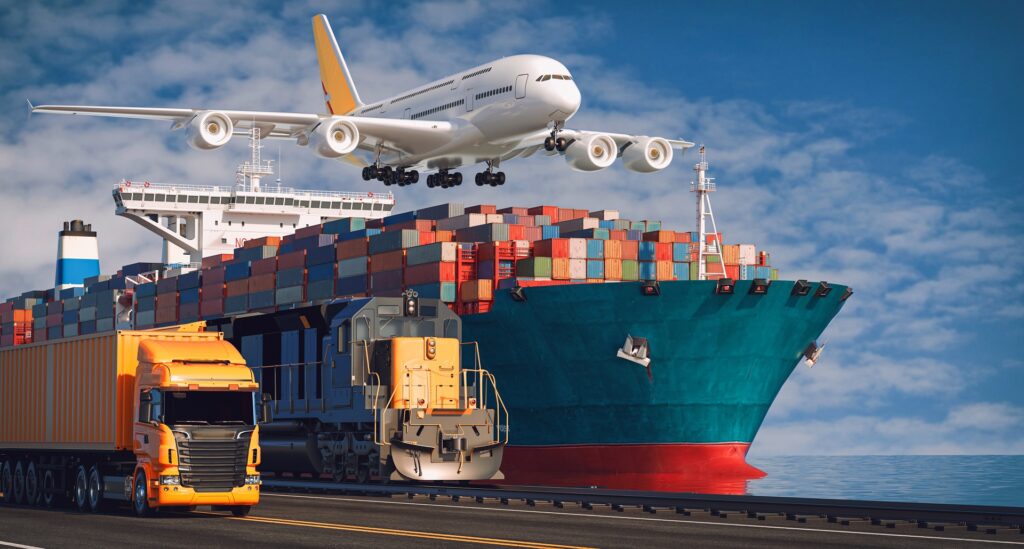Blockchain Adoptions in The Maritime Industry: Brief Introduction

Blockchain is a distributed database system that tracks encrypted transactions and has a chain structure made up of blocks. Each step in a money transfer creates a block. Each piece of information, such as the sender’s name and the amount sent, is a block. These blocks are encrypted, never modified, and rendered unbreakable during the transfer procedure. These blocks are dispersed around the network, and everyone has access to the same encrypted data.
This technology underpins the decentralized nature of blockchain. Only the buyer and seller named on the block can process the information on it. Furthermore, Blockchain technology is transparent; anyone may review and evaluate the blocks that have been accumulated thus far.
Individual users have unparalleled power over their digital identities because to blockchain technology. As a result, blockchain, a worldwide open ledger, is employed not only in the generation of cryptocurrencies, but also in a variety of other applications such as storage, management, and storage. It is the key to the economy of trust because of the possibilities it provides for digital identification. In this regard, blockchain is not only restricted to the banking industry; businesses are also capitalizing on the possibility presented by digital technology. In this regard, blockchain technology is said to be at the heart of the fourth industrial revolution.
So much so that technology will have a significant impact on our lives in the future years. Social media, big data, robots, and artificial intelligence will not have this effect. The blockchain, which is the foundation of virtual-digital money, will be the actual revolution. Important initiatives will be done to ensure the integration of many sectors with technology by utilizing blockchain technology.
IBM, which utilizes digital technology to ease international trade, has attempted to form a digital trade chain consortium using blockchain technology with companies that include some of Europe’s top banks.
Maersk Line, one of the world’s largest maritime transport operators, has begun to use blockchain infrastructure as part of a strategic partnership with IBM in order to save time and money in the operation of ships and cargoes (containers) in international waters, as well as to speed up the process and eliminate document procedures.
In conclusion, the benefits of digitization, particularly the prospects provided by blockchain technology, make our lives easier and revolutionize the way we conduct business in a variety of sectors and fields, including banking, health, science, and industry.

The reason why Blockchain-based technology is being discussed more and more on global trade platforms today is to cut transportation costs, increase transparency, and eliminate the need for paper-based paperwork.
Some significant transportation corporations are testing the system they have already developed at specific ports by entering into infrastructure agreements with technology companies in order to develop this system. Despite a 10% rise in benefits, it is estimated that a spending of roughly 1.8 trillion dollars will be avoided as a result of the sector’s transition to the digital order.
Each year, nearly 4 trillion dollars worth of cargo is transported around the world. The sea transports 80% of the things that humans use on a daily basis. Once the inter-country global supply restrictions are removed, it is anticipated that international trade will expand by 15%. The number of documentation required for trading is expected to drop by at least a fifth.
When we consider the present modes of transportation, we see a system that is more complex, slow, and expensive, with people working on the same task constantly sending messages to one another and following the process.
Furthermore, it is a manual, time-consuming, and paper-intensive system, one in which there are people who are unable to make proper risk assessments, resulting in a steady stream of fraud cases. There is a system in place where the cost of handling a container is nearly equal to the cost of carrying it.
When we look at the platform system, we notice a system that is quick and secure, with end users having access to one another, permitted consent, and no changes being allowed. Digital documentation, a dependable workflow, and mechanics for enhanced risk assessment are all included in the system. Furthermore, the impact of unauthorized individuals on the workflow is decreased. In addition, we see a scheme where less administrative costs and the cost of documents for customs are removed.
The Benefits and Structure of the System

As a result of the transition to a digital platform system, trade barriers will be lowered, supply chain productivity will increase, and the market effect of container transportation will increase. Let’s take a brief look at blockchain benefits by actors;
Ocean Carriers
New links between carriers will be developed as a result of the transfer of ships and cargo, and real-time access to terminals and ships will be feasible. Due to a digital audit record of end-to-end shipment events and source documents, customer service, network integration and revenue leakage costs are reduced, and misdeclared cargo is reduced
Port / Terminal Operators
New links between carriers will be developed as a result of the transfer of ships and cargo, and real-time access to terminals and ships will be feasible. Due to a digital audit record of end-to-end shipment events and source documents, customer service, network integration and revenue leakage costs are reduced, and misdeclared cargo is reduced.
Government Authorities
The effect of intermediaries will be eliminated, and terminal productivity will be enhanced thanks to real-time access, with end users in the system. End-to-end visibility across pre-built connected transport corridors to shipping companies and other actors, and real-time access to more information to enhance port collaboration and improve terminal planning.
Intermodal Operators
They will have real-time access, will be participating in the end-to-end supply chain, and will have more planned and beneficial transportation.
Shippers and Beneficial Cargo Owners
Shippers will be included in the end-to-end supply chain, and productivity will rise as a result of the more transparent, open, and planned transportation. A more transparent system will be implemented, one that does not rely on paper and early notification of issues, full transparency to validate fees and surcharges, and less safety stock inventory.
Financial Services
To help automate manual verification processes, drive transparency, simplify compliance, and streamline processing and settlement, have access to a definitive source of critical trade data.
As a result of the transition to a digital platform system, trade barriers will be lowered, supply chain productivity will increase, and the market effect of container transportation will increase. Many of marine industry players are looking for a blockchain solution to improve industry collaboration but the concept of a completely open platform where everyone may cooperate without limits still has to be developed.